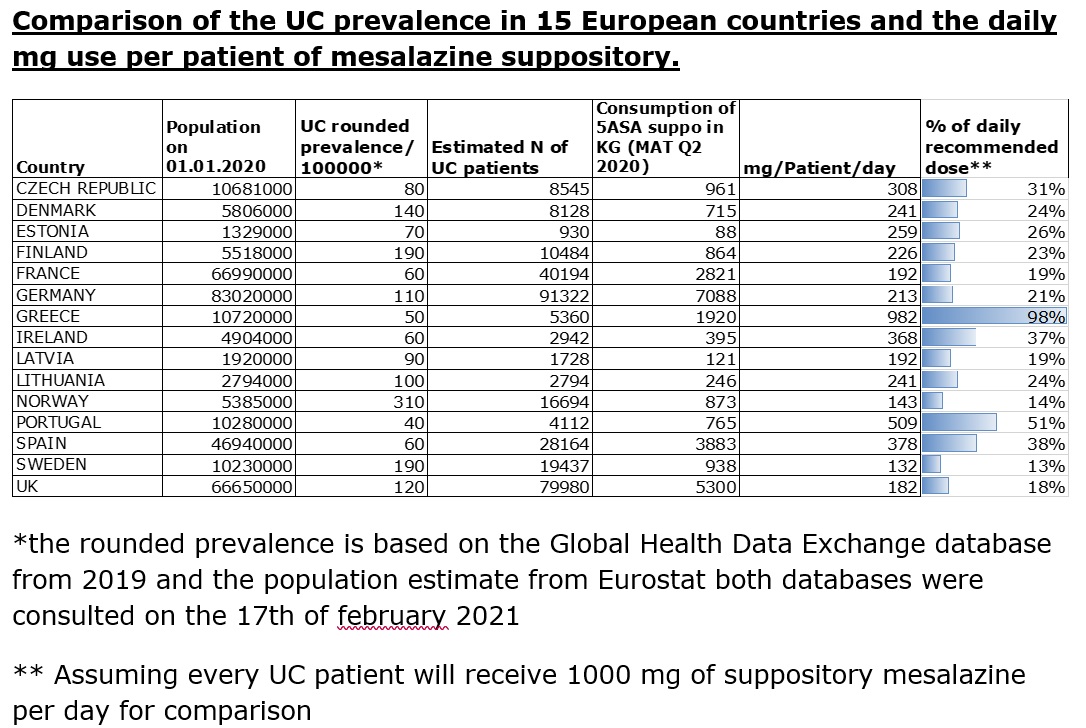P650 A trend to higher adoption of mesalazine suppository use for UC patients in 15 European countries
Mackenzie-Smith, L.(1);Wüthrich, H.(2);Laoun, R.(2);
(1)Tillotts Pharma AG, International Brand Management, Rheinfelden, Switzerland;(2)Tillotts Pharma AG, Medical Affairs, Rheinfelden, Switzerland
Background
In a previous abstract (ECCO 2014), we showed geographical differences between European countries in the use of 5ASA suppositories. The updated ECCO guidelines published in 2016 reiterated the importance of mesalazine suppositories in patients with ulcerative colitis: A mesalamine 1-g suppository once daily is the preferred initial treatment for mild or moderately active proctitis, mesalamine foam or enemas are an alternative, but suppositories deliver the drug more effectively to the rectum and are better tolerated [Statement 11A]. We wanted to look at the changes in mesalazine suppositories use and compare it to 2012.
Methods
We collected the data of suppositories consumption from April 2019 until March 2020 from IMS, the prevalence of UC in 2019 from the Global Health Data Exchange and the estimation of the population for 15 European countries (Czech Republic, Denmark, Estonia, Finland, France, Greece, Germany, Ireland, Latvia, Lithuania, Norway, Portugal, Spain, Sweden and the United Kingdom) from the Eurostat database. For comparison purposes, we assumed that all the patients could receive a 1000 mg daily dose of mesalazine suppository.
Results
The aggregate sales data from IMS show that 26979 kg of mesalazine suppository were consumed during the full year in 15 European countries. If we exclude Spain from the analysis, 23096 kg were consumed by 14 countries and this is a 1.6-fold increase in comparison to 2012. Assuming a cut-off of 33% of UC patients receiving the maximum daily dose of 1000 mg, 4 countries showed high use of mesalazine suppositories above that cut off: Greece, Ireland, Spain and Portugal. Except for Ireland, those 3 other countries are from Southern Europe.
In addition when we compare the data from 2019 to 2012, we see a clear increase in the use of mesalazine suppository in the 14 countries. All countries showed an increase in suppository use that is above 50% except for Czech Republic, Denmark, France and Sweden. The increase in those countries was less pronounced.
Sweden and Norway had the lowest rate of suppository use compared to the other countries.
Conclusion
Despite all the uncertainty around the UC prevalence and parallel import (due to price difference between the different European countries), there is a clear trend toward a higher use of suppositories in all the European countries. A full analysis of the topical use of mesalazine (suppository, foam and enema) would be interesting to evaluate more accurately the adherence to the ECCO guidelines in clinical practice.


